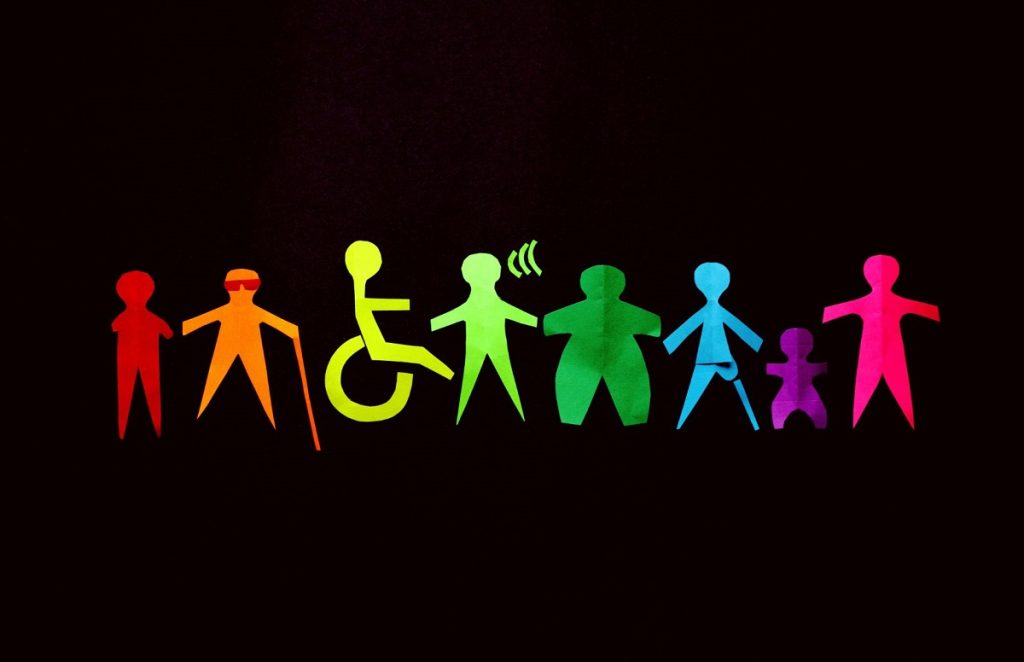During the pandemic, employment rates among the disabled rose along with the widespread adoption of remote work. Currently, employment among people with disabilities continues to rise. Changing attitudes toward remote work continue to benefit this demographic, who has long fought for reasonable accommodation to their needs.
People with disabilities may have the education and skills to do many jobs yet may lack the ability to commute to work, maintain a 9-to-5 schedule, or conform to the employer’s picture of the ideal employee. For them, remote work is a professional dream come true as they can maintain flexible schedules in their own homes. The pandemic opened many opportunities for individuals previously denied in-person opportunities.
Those with disabilities along with women with children formed the core of remote workers before Covid a long with a a mix of other low-paid contingent workers, marginal small business owners, or independent contractors. When the pandemic moved higher paying full-time jobs home, disabled workers benefited from new trends in work.
As researchers from the National Institute of Health put it pandemic-era workers “tend to have a slightly higher social status and be more engaged in privileged, well-paid occupations and knowledge industries than on-site workers (see next page). Homeworkers earn more and have more assets than the average worker.”
Pandemic Gain For Disabled Workers
Disabled workers benefitted from the growing popularity of remote work during the pandemic.
Figures from U.S. Bureau of Labor Statistics’ monthly report on employment show that 500,000 more disabled people held jobs as compared to September 2021. The latest report from July 7, 2023, shows another rise to 7.6 million.
- April 2020 3.7 million
- February 2021 4.2 million
- October 2022 5.7 million
- July 2023 7.6 million
Now that the pandemic is officially over and companies are calling workers back to the office, disabled workers are retaining many of the gains they experienced during Covid. Employment rates among the disabled is now 22.4% – unprecedented growth, according to Allison Chase, president and CEO of the Florida-based Able Trust, a nonprofit focused on the disabled community.
The changing rates are due to two general phenomena observed after the pandemic: the need for labor and the lessening stigma of working from home. With transportation not a concern, disabled citizens applied for jobs and got them.
“It’s something that many people with disabilities have wanted for a long time,” Chase said. “Once you take it [transportation] out of the equation, a lot of jobs open up.”
Being able to work from home removes the need to travel to work and face physical barriers during their commute and in the workplace. Those who need assistive technology or mobility equipment have it at home, where they can take short breaks as needed, yet get the job done.

Who Is Disabled?
According to the Federal Government, a person with a disability has at least one of the following conditions:
- Is deaf or has serious difficulty hearing
- Is blind or has serious difficulty seeing even when wearing glasses
- Has serious difficulty concentrating, remembering, or making decisions because of a physical, mental, or emotional condition
- Has serious difficulty walking or climbing stairs
- Has difficulty dressing or bathing
- Has difficulty doing errands alone, such as visiting a doctor’s office or shopping, because of a physical, mental, or emotional condition

The CDC found in a 2016 Behavioral Risk Factor Surveillance System (BRFSS) report, that mobility is the most likely disability people will have, followed by cognition, hearing, vision, independent living, and self-care.
CDC’s Morbidity and Mortality Weekly Report notes that 1 in 4 U.S. adults – 61 million Americans – have a disability that impacts major life activities. Up to 70% are considered invisible as they are cognitive in nature. Because the disabled have faced hiring discrimination, just 4% self-identify as disabled.
Being able to work from home removes the need to travel to work and face physical barriers during their commute and in the workplace. Those who need assertive technology or mobility equipment have it at home, where they can take short breaks as needed yet get the job done.
As with non-disabled workers, some with disabilities like going into the office. They may find the loneliness, social isolation, and lack of connection that plagues other workers impacts them as well. Many prefer hybrid work. The point is that workers want their needs respected, whether it be for 100% remote work or coming in some days of the week.
What Fields Show The Greatest Gains
Statistics on fields that employ the disabled are hard to find. Disabled individuals perform many jobs in retail, food preparation, and cleaning services, but jobs most in demand are higher-paying business and professional jobs. Jobs in IT, graphic design, copywriting, website deaign, accounting, research, nursing, and more offer excellent income potential.
During the pandemic, telework jobs increased among several categories of disabled workers. Those with cognitive/mental health and mobility impairments got jobs, but so did the visually impaired and those who had difficulty with daily activities inside the home.
Despite the gain, BLS statistics from February 2022 showed
- Disabled persons of all ages are less likely to be employed than those without disability
- Unemployment rates for the disabled are twice as high as for other workers
- 30% of disabled workers were employed part-time vs. 16% for those without disability.
Will Disabled Employment Figures Slip?
Now that many companies are calling workers back to the office, there is fear that the gains made by disabled workers will be eroded. Advocates for the disabled are claiming that working from home is a reasonable accommodation that companies should have offered all along. When workers bring suit against employers for failing to offer remote work, Federal courts continue to side with employers who insist that physical presence in the workplace is necessary to do the job.

The court challenges are likely to keep coming, however. During the pandemic, many developed long Covid, which can be considered a disability under the Americans With Disability Act in certain cases. Researchers part of a Federal Reserve Bank of New York study noted that “telework and flexible scheduling are two accommodations that can be particularly beneficial for workers dealing with fatigue and brain fog” associated with that disease. Employers with 15 or more employees may have to make reasonable accommodations for these workers to comply with the law.
This recent development may bolster the case of other disabled workers who need to work from home.
Impact Of Disabled Workers On Companies
Companies that offered remote work to new applicants and current employees found workplaces became more inclusive. At Meta Platforms, home of Facebook, Instagram, and now Threads, remote workers who more likely to come from diverse communities of people with disabilities, Black, Hispanic, Alaskan Native, Native American, veterans, and women. Their disabled workforce rose from 4.7% to 6.2% between mid-2019 and mid-2022.

Most other companies whose workforces were made remote found their diverse group of workers to be productive, including disabled workers. The pandemic put into question whether all work really needed to be onsite. In essence, it changed many long-revered ideas about work.
Workers have not lost interest in remote work. Advocates for the disabled hope that changing attitudes about work will bode well for people with disabilities who prefer to work at home.


